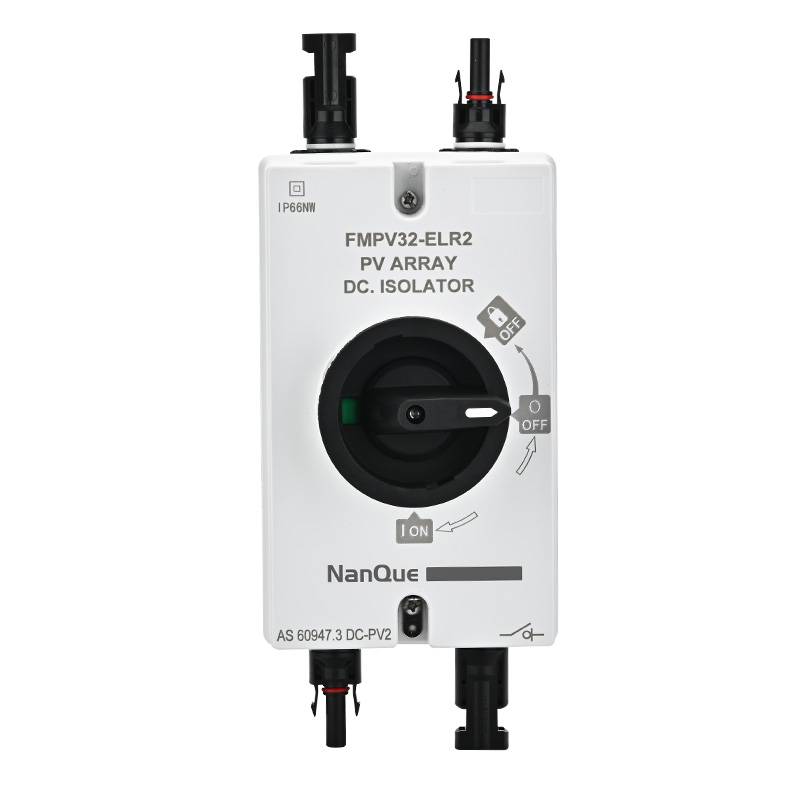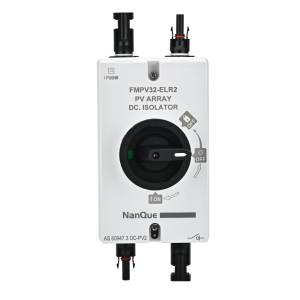
PRODUCT INTRODUCTION
The NQPV2M-32 Series Photovoltaic DC Switch is mainly used in photovoltaic systems with a rated voltage of 1-1200V. It serves as a crucial switching component between photovoltaic panels, controllers, and storage batteries. When circuit maintenance is required or an emergency situation calls for circuit disconnection, the switch allows manual shutdown of the circuit power supply, ensuring the normal operation and safety of the circuit. The product is constructed using high-quality phosphor bronze and pure silver contacts, and is equipped with a built-in arc-extinguishing system. It features fast connection, a long service life, high temperature resistance, flame retardancy, water resistance, and dust resistance.
The product compliant with GB/T 14048.3 and IEC 60947.3 standard
PARAMETERS
Product Model | NQPV2M-32 | |||||
Electrical Characteristics | ||||||
Pole Number | 4P | |||||
Rated Working Voltage Ue(V) DC | 300 | 600 | 800 | 1000 | 1200 | |
Max Working Voltage Uc(V) DC | 1200 | |||||
Rated Current Ie (Wiring Type: Current) | 2P/4P | 32A | 27A | 17A | 10A | 8A |
4P/4B/4S | 32A | 32A | 32A | 32A | 32A | |
2H | 45A | 40A | / | / | / | |
Rated Breaking Capacity Icu (kA) | 1.7 | |||||
Protection Degree (IP Code) | With Box: IP66, Without Box: IP20 | |||||
Mechanical Characteristics | ||||||
Mechanical Service Life (Times) | 6000 | |||||
Electrical Service Life (Times) | 3000 | |||||
Reference Ambient Temperature | 30°C | |||||
Operating Ambient Temperature | - 35°C - + 70°C | |||||
Storage Temperature | - 40°C - + 85°C | |||||
Installation Characteristics | ||||||
Maximum Wiring Torque(N.m) | 3.5 | |||||
Handle Operation Torque(N.m) | 5.0 | |||||
Installation | Wall mount | |||||
WIRING DIAGRAM AND EXAMPLES
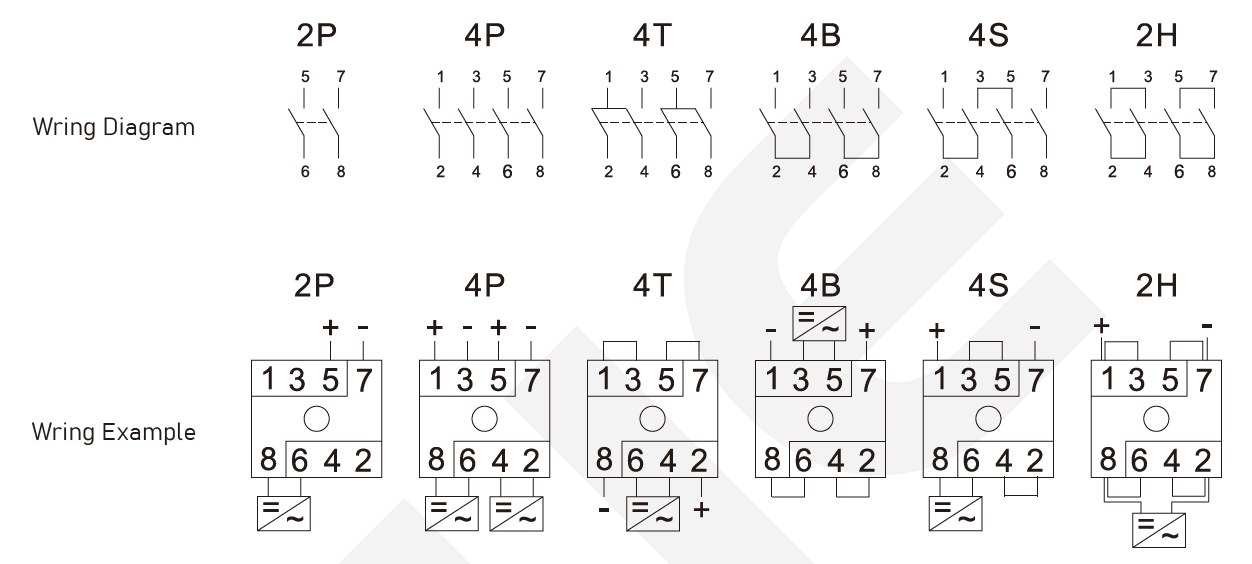
SIZE (UNIT: MM)
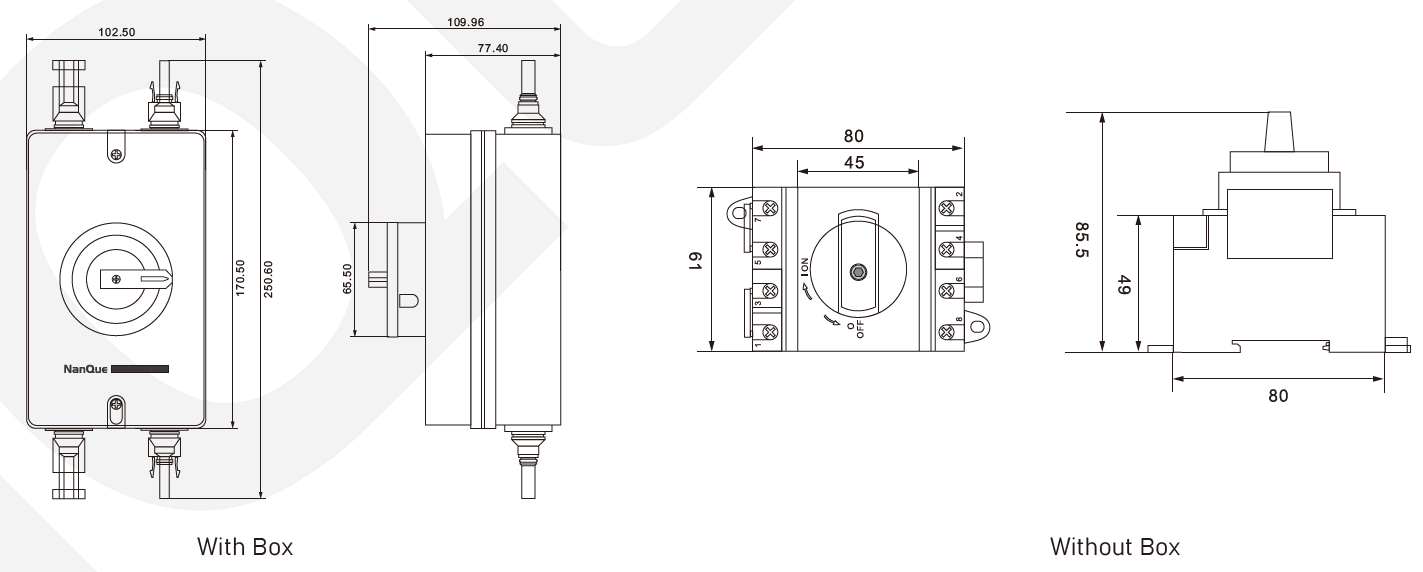
WIRING METHOD
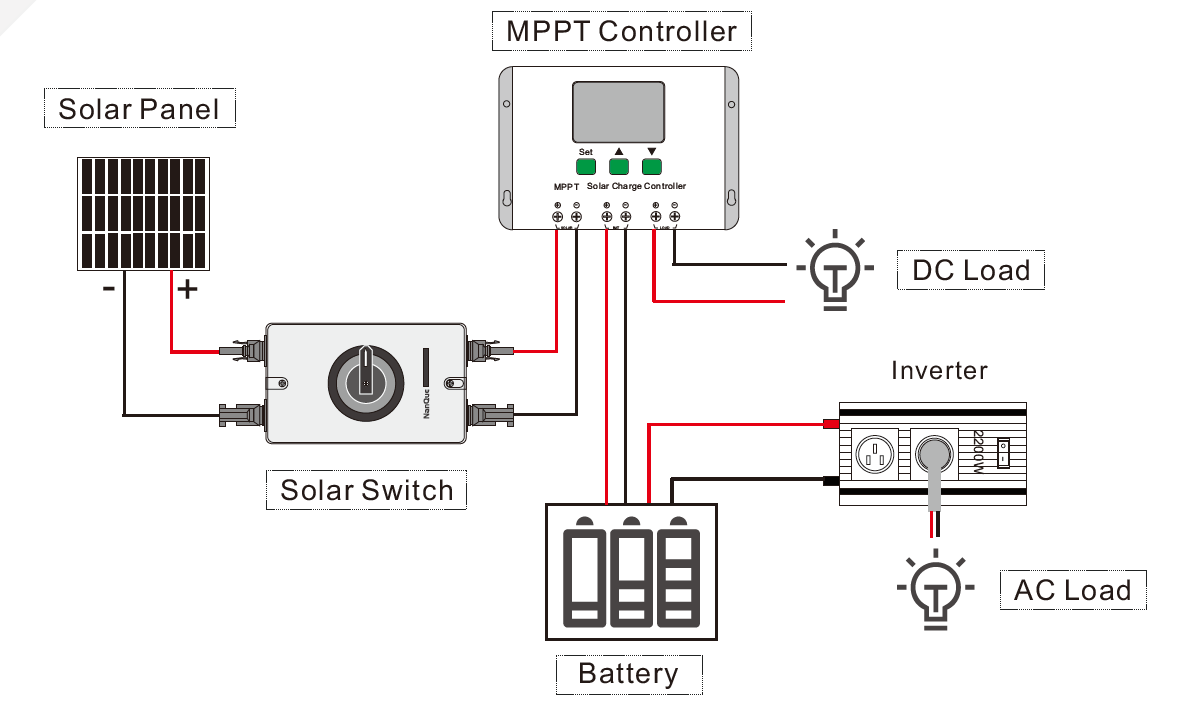
PRECAUTIONS AND WARNING
1. Ensure the PV system is fully de-energized before operating or wiring the DC1200V switch to avoid electric shock.
2. Use only wires rated for DC1200V or higher; improper wire rating may cause overheating or insulation failure.
3. Tighten terminal connections to the specified torque; loose connections lead to arcing and switch damage.
4. Verify the switch’s polarity matches the PV string (positive to positive, negative to negative) to prevent reverse current.
5. After installation, conduct an insulation resistance test (≥100MΩ at 1200V DC) to ensure no leakage risks.
